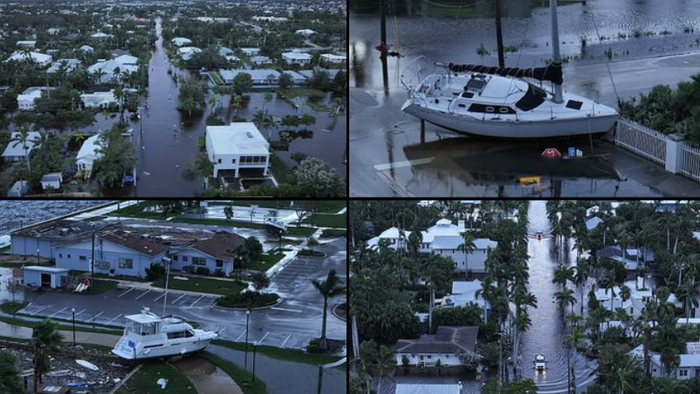Hurricane Milton made a powerful landfall on Wednesday night near Siesta Key, Florida, striking the area as a Category 3 storm. It subsequently moved into the Atlantic Ocean on October 10, 2024, causing widespread destruction across central Florida. The storm resulted in over 3 million energy customers losing power, reflecting severe damage to the electrical infrastructure. Meteorologists have described the rainfall brought by Milton as equivalent to four to six months’ worth of precipitation for some regions, particularly affecting areas around Tampa. Flooding and storm surges have caused devastating impacts, with aerial images revealing significant destruction to neighborhoods, homes, and local businesses.
As the day began, the catastrophic effects of Hurricane Milton became evident, with shared footage illustrating the intensity of the storm’s aftermath. In Punta Gorda, residents faced severe flooding, while coastal resorts like Venice saw homes buried under piles of sand. The storm’s impact created a chaotic scene, with boats displaced from their docks and widespread debris scattered across affected neighborhoods. In Bradenton, observable wind damage affected many properties, highlighting the storm’s relentless nature as it wreaked havoc across various landscapes in central Florida.
The National Hurricane Center provided updates early on October 10, indicating Milton had been downgraded to a Category 1 storm after moving off the coast; however, it still possessed maximum winds recorded over 85 mph. Energy companies mobilized to restore power, responding to reports of over 3.25 million outages across the state by the morning after the storm. Tampa Electric’s CEO conveyed concern over the unprecedented loss of power—a situation deemed more disastrous than any seen during previous storms, due to the extent of destruction that impacted the electrical grid in regions directly struck by the storm.
A significant focus continued to revolve around widespread damage, including reports of a construction crane collapsing into the Tampa Bay Times building and substantial flooding incidents following the storm’s arrival. Captured on social media, videos and images showcased significant destruction, with the roof of Tropicana Field in St. Petersburg ripped off and severe flooding reported in residential and commercial areas alike. Various individuals and local governments initiated damage assessments to understand the extent of the destruction and to begin the recovery process.
In the wake of Hurricane Milton, communities faced a challenging recovery period exacerbated by weather considerations. Flooding, debris removal, and power restoration became immediate priorities, as utility crews began assessing the damage across central Florida. With air travel disrupted and port operations stalled due to conditions left behind by the hurricane, authorities were working to address these logistical challenges. The incident underscored the need for emergency preparedness, as the dual impact of Hurricane Milton and another storm, Helene, only weeks earlier, intensified the ongoing recovery work for affected Floridians.
Meteorologists estimated Milton’s intensity as the fifth-strongest cyclone recorded in the Atlantic Basin, a clear sign of its significant strength and impact. With weather patterns remaining volatile, the region anticipates further considerations for ongoing storm threats as the season progresses, creating an urgent necessity for vigilance and proactive measures in disaster preparedness and responsive strategies across impacted communities.

